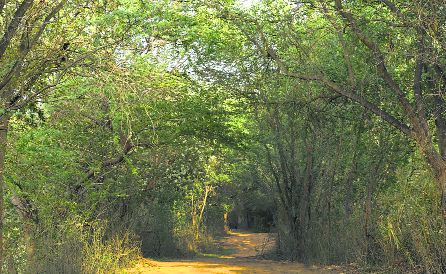
The forest area near Sukhna Lake. Pradeep Tewari
Dushyant Singh Pundir
Tribune News Service
Chandigarh, April 12
To prepare an inventory of wild animals, the UT Forest Department has decided to carry out the second wildlife census in the Sukhna Wildlife Sanctuary.
Debendra Dalai, Chief Conservator of Forests and Chief Wildlife Warden, UT, said the five-day exercise would be undertaken in the first week of May.
The Dehradun-based Wildlife Institute of India (WII) had agreed to provide technical support to the department and a three-day training of the staff would begin from April 22, he said, adding that the exact dates of the census would be finalised soon.
The department had to send a reminder to the institute as the months of March and April were the best time to prepare a list of wild animals.
The first wildlife census was carried out in the Sukhna Wildlife Sanctuary, spread over an area of 26 sq km in the catchment area of Sukhna Lake, in 2010.
He said the second census could not be carried out in March/April last year due to the Covid-19 pandemic and subsequent imposition of lockdown in the country.
Being season specific, the second wildlife census could not be carried out in 2020 as the best period to spot the animals had passed due to the lockdown, said Dalai, adding that it was difficult to locate the animals in other seasons.
A team of experts from the WII, environmentalists, representatives of NGOs and biology and zoology students from Panjab University took part in the first census.
The team took three days to count the nine species of mammals and 65 species of birds by using direct evidence, including the animals and birds spotted in the area, and indirect evidence such as footprints and animal faeces.
As per the first census report prepared by the WII, the population of sambar in the sanctuary was between 1,000 and 1,200 and peafowl population was between 900 and 1,100. However, leopards were not spotted directly, but their foot marks were found.
The main animals spotted in the sanctuary include sambar, chital, pangolin (anteater), wild boar, jackal, small Indian civet, jungle cat, porcupine, Hanuman langur, rhesus monkey, Indian hare, common mongoose and three- striped palm squirrel.
Join Whatsapp Channel of The Tribune for latest updates.



























